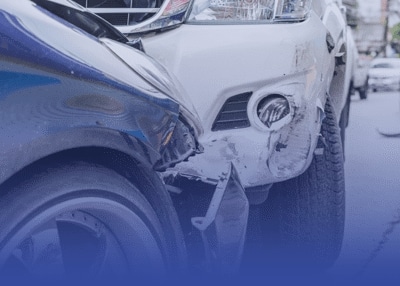22 August, 2023

Being involved in a motor vehicle accident can be a frightening experience. You may even find yourself partially responsible for the accident. It is important to understand what this means for you legally and how it may impact your ability to seek compensation for your injuries and damages. When you are partially at fault for an accident, you share some of the responsibility for the accident. Fault is often determined by insurance companies and legal authorities based on the evidence and statements provided by all parties involved. The degree of fault assigned to each party can vary depending on the circumstances of the accident.
If you or a loved one have been involved in a motor vehicle accident, contact The Barnes Firm. Our experienced team of personal injury attorneys will thoroughly investigate your case and help you navigate the legal process. Call us today at (800) 800-0000 for a FREE consultation and find out what your case is worth.
If you find yourself in a situation where you are partially at fault for an accident, there are a few steps you should take to prioritize your health, protect your rights, and ensure you receive fair compensation. After any accident you should:
In the event that you are partially at fault for an automobile accident, it is important to understand comparative negligence laws and how they may impact your case. In the state of California, the comparative negligence law follows a “pure comparative negligence” system. This means that even if you are found to be 99% at fault for the accident, you may still be eligible to recover 1% of the compensation.
It is important to note that these states follow a “pure” system, which allows for recovery regardless of the degree of fault. This is different from other states that follow a “modified” comparative negligence system, where you may only be eligible for compensation if your percentage of fault is below a certain threshold, such as 50% or 51%.
When determining fault in an automobile accident, several factors are taken into consideration. These factors include:
At The Barnes Firm, we understand how traumatic multi-vehicle crashes can be for victims and their families. Our dedicated team, including an auto accident attorney in San Diego, will work hard to defend your rights and help you receive the compensation you deserve. If you or a loved one were injured in a multi-vehicle accident, don’t hesitate to contact The Barnes Firm. Call us today at (800) 800-0000 for a FREE consultation – it could be the best call you make.
Los Angeles Motorcycle Accident Lawyer
Oakland Motorcycle Accident Lawyer
San Francisco Motorcycle Accident Lawyers
San Diego Motorcycle Accident Lawyer
San Jose Motorcycle Accident Attorney
Written by The Barnes Firm, reviewed by Richard Barnes

Rich Barnes
President
Richard Barnes: “As President of The Barnes Firm, I have dedicated my career to achieving justice in hundreds of cases for the victims of injuries caused through the fault of others. Additionally, I have been honored to have been elected Best Lawyer and a Super Lawyer”
Years of Experience: 30+ years
LinkedIn Profile: Richard Barnes


This page has been written, edited, and reviewed by a team of legal writers following our comprehensive editorial guidelines. This page was approved by attorney president Rich Barnes who has more than 30+ years of legal experience as a practicing personal injury trial attorney.
The Barnes Firm is here to help you. Our personal injury firm helps individuals and their families who
have suffered an injury in an accident.

Whether your car crash was minor or serious, any injuries sustained in an accident can be painful and costly.

All motorcycle accidents are different, the compensation you receive will depend on the circumstances surrounding your accident.

A truck accident can be catastrophic, even in low-impact crashes, if you or your family are involved, you may be entitled to significant financial compensation.

There are dozens of accidents involving school buses each year, most commonly, involving children outside a school bus.
Explore Articles Related to Your Situation

Many people have heard of the term “pain and suffering,” but they may not know what it mean...
read more
Hiring a handyman is a convenient way of fixing minor repairs and maintenance issues in your ho...
read more
When it comes to legal matters, understanding the statute of limitations, or time you have to f...
read more
Insurance companies like to say they’re a “good neighbor” or they’re “on your side.�...
read moreWe are always available to discuss your case. Give us a call at (800) 800-0000.
Fill out our form and we will contact you shortly to discuss your case
Our attorneys will come to your home, office or hospital at your convenience.
We are available anytime, including after hours and
weekends.
420 Lexington Avenue
Suite #2140
New York, NY 10170
Phone: (800) 800-0000
Fax: +1 (800) 853-5153
600 Old Country Road
Suite #425
Garden City, NY 11530
Phone: (800) 800-0000
Fax: +1 (800) 853-5153
500 Pearl Street
Suite #700
Buffalo, NY 14202
Phone: (800) 800-0000
Fax: +1 (800) 853-5153
451 Grider Street
Buffalo, NY 14215
Phone: (800) 800-0000
Fax: +1 (800) 853-5153
28 East Main Street
Suite #600
Rochester, NY 14614
Phone: (800) 800-0000
Fax: +1 (800) 853-5153
633 West 5th Street
Suite #1750
Los Angeles, CA 90071
Phone: (800) 800-0000
Fax: +1 (888) 800-7050
555 12th Street
Suite #1470
Oakland, CA 94607
Phone: (800) 800-0000
Fax: +1 (888) 800-7050
655 W. Broadway
Suite #940
San Diego, CA 92101
Phone: (800) 800-0000
Fax: +1 (888) 800-7050